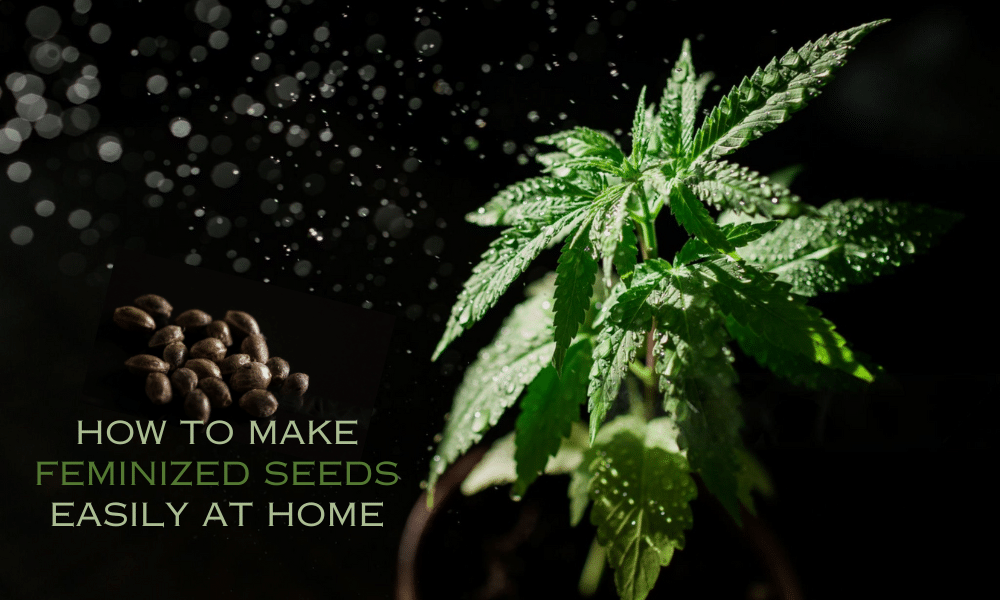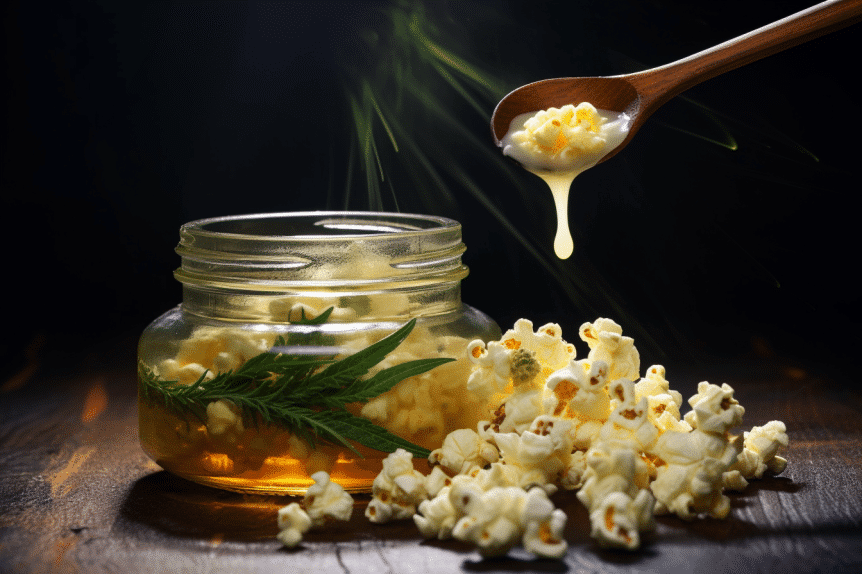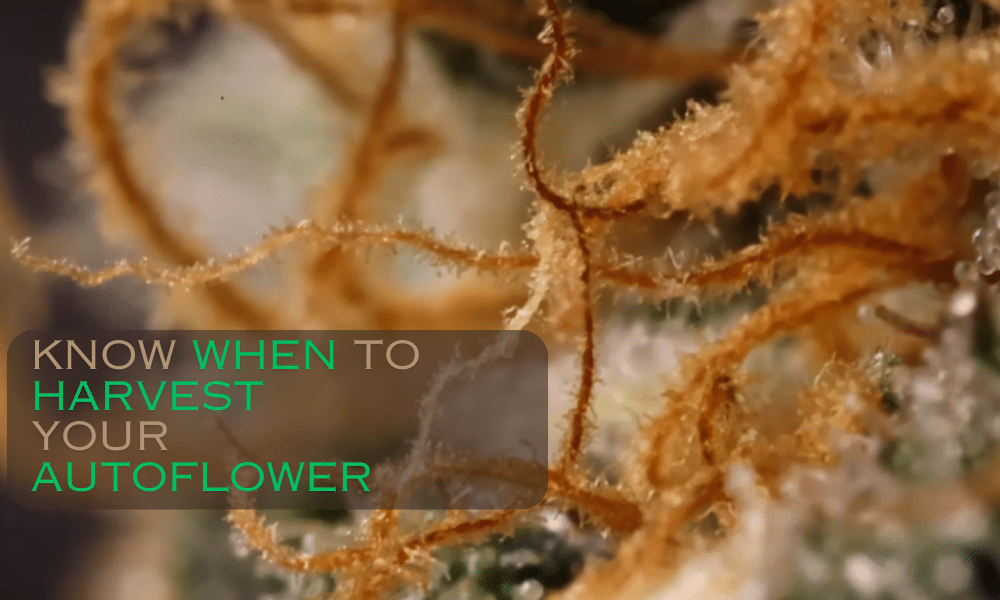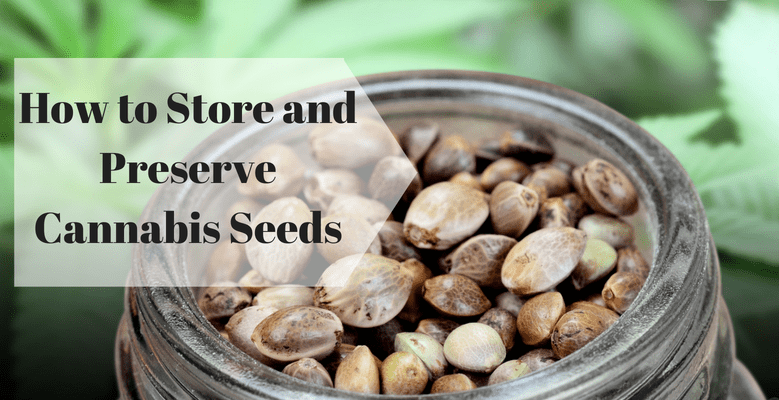No products in the cart.
Marijuana Education
How to make feminized seeds: five easy yet effective methods
Feminized seeds were a breakthrough in cannabis cultivation technology, making it easier than ever for cannabis cultivators to grow dank, resinous buds on hearty female plants.
While you can buy feminized seeds online, experienced cultivators can also make them at home. There are a few different methods to feminize seeds, each with its own challenges and success rates. In this article, we’ll answer the question of how feminized seeds are produced and cover five methods for making feminized seeds at home.
Understanding feminized seeds and the importance of feminization
The definition of a feminized seed is one that has been bred to produce female plants.
Feminized seeds changed the game for growing weed plants. Only female cannabis plants are capable of growing the nugs that you know and love to smoke – feminized and regular seeds have very different chances of producing female plants – regular seeds are 50/50 while feminized is 99%.
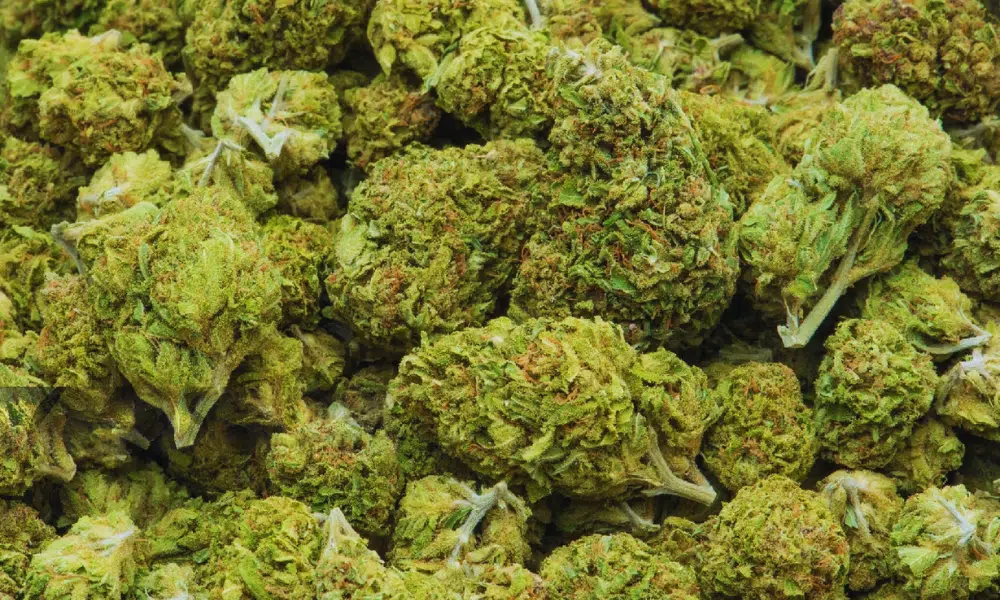
Feminized seeds are highly efficient for growers because they eliminate the risk of having a wayward male plant in your crops. Cannabis plants do not show obvious signs of their sex until flowering, making it challenging to know how to identify a female seed. Having male plants near female ones results in pollinated buds that are lower in THC potency and full of seeds. Feminized seeds eliminate this risk.
Benefits of seed feminization include:
- Higher success rate for flowering plants
- Larger harvest
- More efficient grow
- Consistent quality
Feminizing cannabis seeds make a genetic clone of the mother plant, so they’re good for preserving specific strains or breed traits from harvest to harvest. Feminized seeds can’t be used for breeding since they only produce female seeds, but they make excellent clones.
Is it possible to turn male seeds into female?
It is not possible to change the sex of a cannabis plant and turn a male into a female. The sex of a cannabis plant is determined by its genetics when it’s a seed.
Cannabis plants can turn hermaphroditic under stressful conditions, growing both flowers and pollen sacks, but this results in seedy nugs with lower levels of potency. The same thing happens if male and female plants are left together.
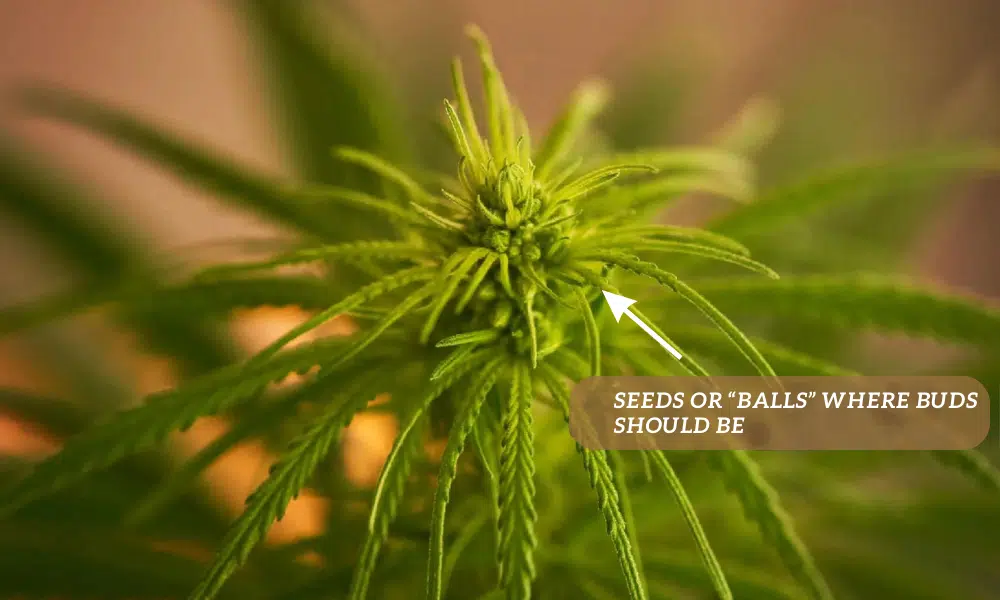
The feminization process for cannabis plants is surprisingly similar to the hermaphroditic process, but it’s done intentionally in a controlled way on specific plants. This process works on female plants to grow seeds with all female genetics (well, 99% female genetics.) However, this process is done before the seeds develop, and cannot change their sex after the seeds have grown.
How to make feminized cannabis seeds: 5 techniques
How do you feminize seeds?
In short, you must allow a female plant to begin to flower and then induce stress in a controlled way to force the plant into making pollen sacks. There are a few methods to do this, some involving chemicals and others regular household items.
One important note is that since feminized seeds are genetically identical to their mother plants, it’s crucial to choose a plant with stable genetics for feminizing. Any hermaphroditic tendency as well as yield size and plant stability are directly related to the mother plant.
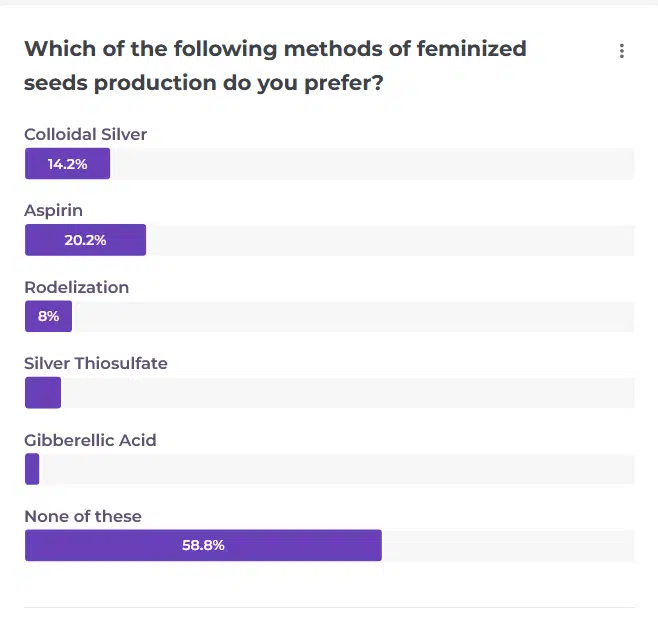
How to make feminized seeds with colloidal silver
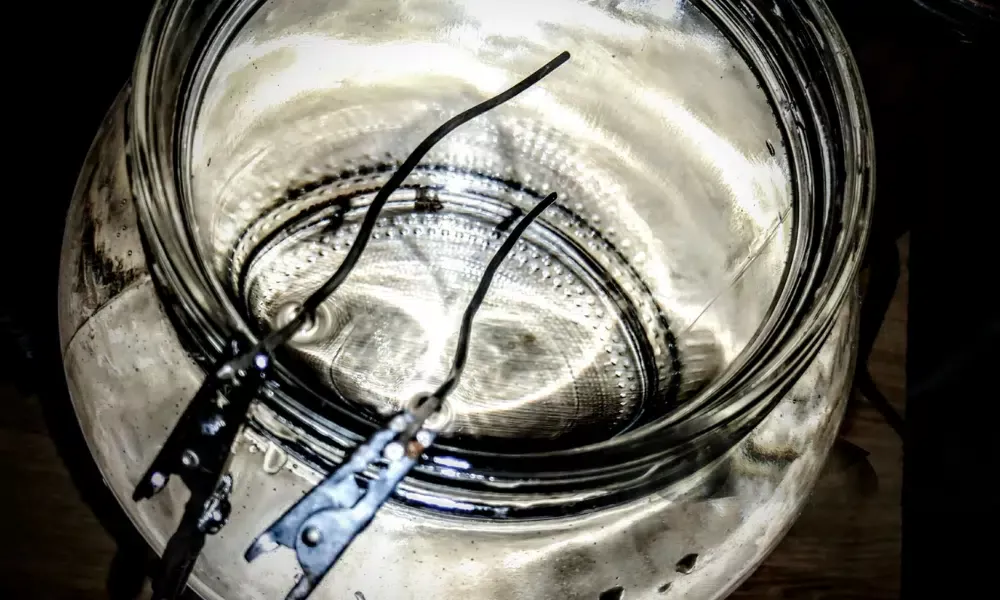
The first and most popular method of feminizing seeds is with colloidal silver. Colloidal silver is a water-based solution with microscopic pieces of silver suspended in it. It works to feminize your seeds because silver suppresses ethylene production in plants, a hormone necessary for female sex expression. The total silver content in colloidal silver is measured in milligrams per liter (mg/L) or parts per million (ppm.) For feminizing seeds, you need colloidal silver between 15ppm and 30ppm.
In commercial cannabis grows, feminizing clones is common practice. With clones, you can begin to spray the plant with colloidal silver in the vegetative phase, one week before switching to a 12/12 flowering light cycle.
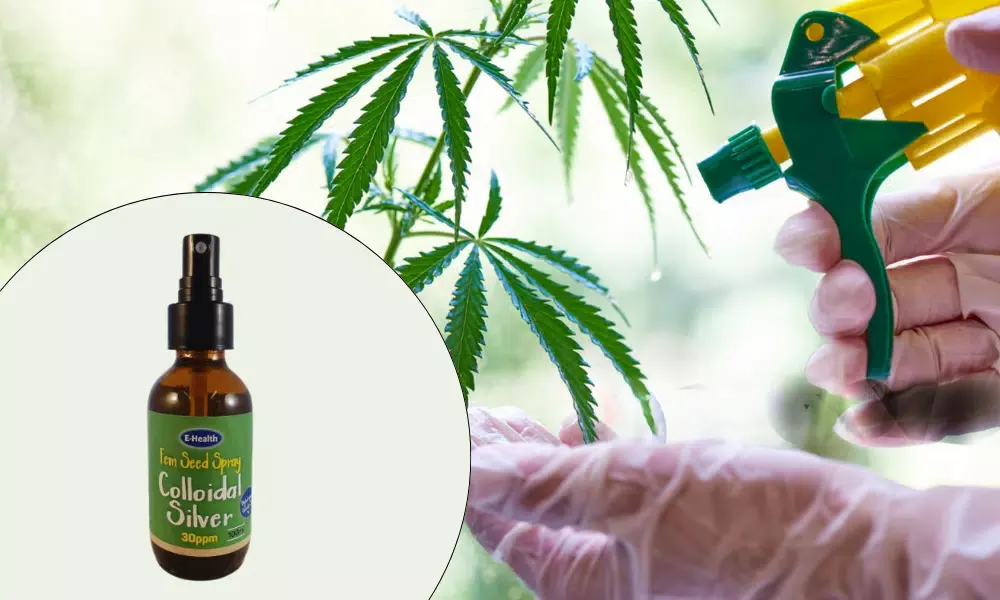
If you’re feminizing a plant you’re growing from a seed, wait until the plant reaches sexual maturity (begins flowering) before you feminize it to ensure it’s a female plant. Spray the plant with your colloidal silver solution up to 3 times a day, soaking the plant well during each round. You can spray the plant for up to 14 days, although some growers report seeing results in as little as 5 days.
Male plants mature faster than female plants, so you can expect to see pollen sacks develop quickly. Viable pollen sacks develop within 3 – 4 weeks. The biggest downside of using colloidal silver is how intensive the application process is, with multiple sprays per day for up to 2 weeks.
Making your own colloidal silver
The easiest way to make colloidal silver is with a colloidal silver generator. These machines include everything you need to make your own colloidal silver and simplify the process greatly. However, they can be expensive.
You can also go the DIY route and make your own. Making colloidal silver is fairly straightforward, although it involves electricity and metal which can be dangerous.
To make colloidal silver, you’ll need
- Pure silver – 99% pure or better
- Distilled water – not tap water
- 2 lengths of electrical wire
- A 9 – 12 volt power adapter (or 9-volt battery)
- Small alligator clips
- A PPM meter
- Glass jar
Optional
- A solder
The process of making colloidal silver:
-
- Strip the end of your wires. Securely connect the alligator clips to one end of each wire. Some people recommend soldering the clips to the wire, but that’s up to you.
- Affix the wires to the power adapter: one on positive (red) and one on negative (black). Do NOT have the adapter plugged in during this
- Fill a glass jar ¾ of the way full with distilled water.
-
- Place a piece of silver inside each alligator clip and suspend them in the water on opposite sides of the jar.
- Plug in the adapter and turn it on. Let it sit for 20 minutes.
- Unplug the adapter and remove the clips.
- Test the water with your PPM meter. It needs to be at 15pmm and not more than 30ppm. The solution should be a pale gold color.
- Store the mixture in an airtime, amber-tinted bottle in a cool, temperature-stable place. Do not store it in the fridge!
- Clean the silver and store it for next time.
Is colloidal silver safe and effective?
There are a few concerns about making your own colloidal silver. You need pure, distilled water and high-quality silver. If you don’t know the origins of your silver, you cannot verify that it is quality and not tainted metal.
There is no effective way for home growers to measure the strength of their colloidal silver solution. The more concentrated your colloidal silver solution is, the stronger it is. Some companies recommend a TDS meter to measure your solution, but this is ineffective. A TDS meter stands for total dissolved solids and measures the conductivity of the water to estimate the amount of dissolved solids – it cannot directly measure colloidal particles in the water. To know the strength of colloidal silver, it must be measured with chemical analysis techniques in the lab.
It’s much easier to purchase premade colloidal silver that’s been tested in a lab so you can use it with confidence.
While you can safely consume colloidal silver orally, you should NEVER smoke it. Once you’ve treated a plant with colloidal silver, it is no longer safe to consume. You cannot wash the silver off of the buds: it gets soaked into the flower and cannot be removed. Only treat plants that you don’t want to smoke.
While you can consume colloidal silver orally, it is not considered safe by the FDA for the treatment of disease, and too much can lead to Argyria, a permanent blue/grey skin tint.
Silver Thiosulfate (STS) Technique
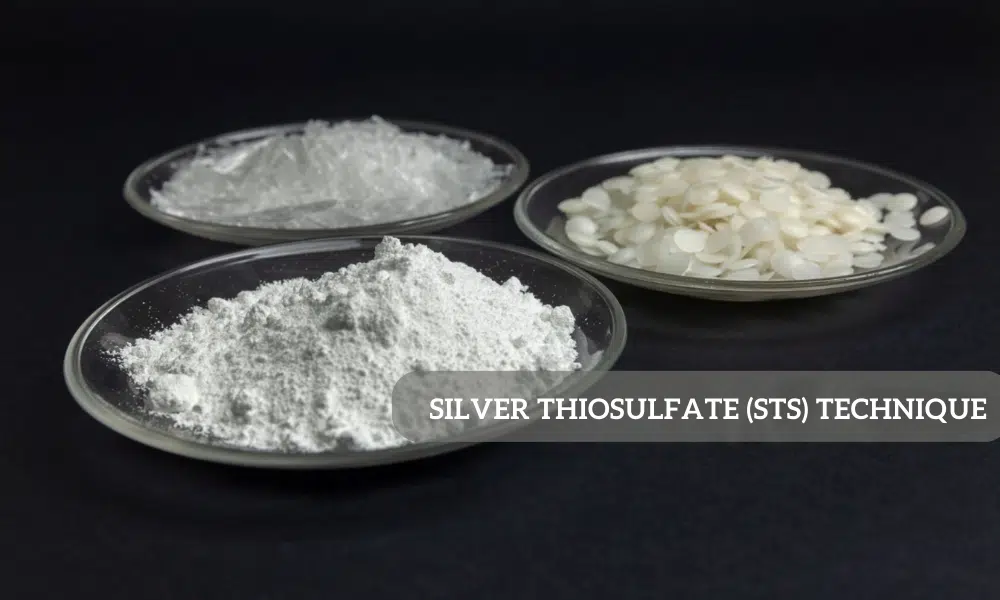
Silver thiosulfate (STS) is another method of feminizing seeds using silver to suppress ethylene production. It is similar to colloidal silver but uses a different water and silver solution. Like colloidal silver, you can buy silver thiosulfate online. However, it’s not cheap so if you want to make it yourself, there are a few things you need to know.
Making silver thiosulfate is slightly easier than colloidal silver because you don’t need batteries or electricity – just the ability to mix solutions together. However, you are still mixing chemical compounds together, which comes with its own set of risks. Silver nitrate, used in one of the solutions, is toxic in high quantities and can stain your skin when handled with bare hands. These crystals can also explode if exposed to ethanol. Use personal protective equipment like gloves and goggles, and mix your silver thiosulfate solution in a well-ventilated space.
To make silver thiosulfate, you have to mix up 2 stock solutions: silver nitrate and distilled water and one of sodium thiosulfate and distilled water. When stored separately and properly in dark, airtight containers in a temperature-stable place, these stocks can keep for up to a few years. Once mixed together, it will keep for around a month. When you’re ready to apply the silver thiosulfate to your plants, combine an equal amount of each stock in an empty spray bottle and dilute with water.
Do not smoke any plants or flowers that you’ve sprayed with STS. The solution gets absorbed into the flower and cannot be washed off. Once you’ve sprayed a plant to feminize it, do not smoke it because these chemicals can be harmful to your lungs.
How to feminize seeds with Silver Thiosulfate
Use gloves when spraying the solution onto your plants to avoid staining your hands. Soak each branch, node, and leaf that you’re applying the STS to.
Silver thiosulfate is a lower effort to feminize your seeds since it doesn’t need to be sprayed as often. You can spray STS once before flowering has begun and then once every five days until you see pollen sacks start to form.
Many growers anecdotal report that silver thiosulfate has a better success rate for feminizing seeds than colloidal silver.
Rodelization technique – a natural way of producing female seeds
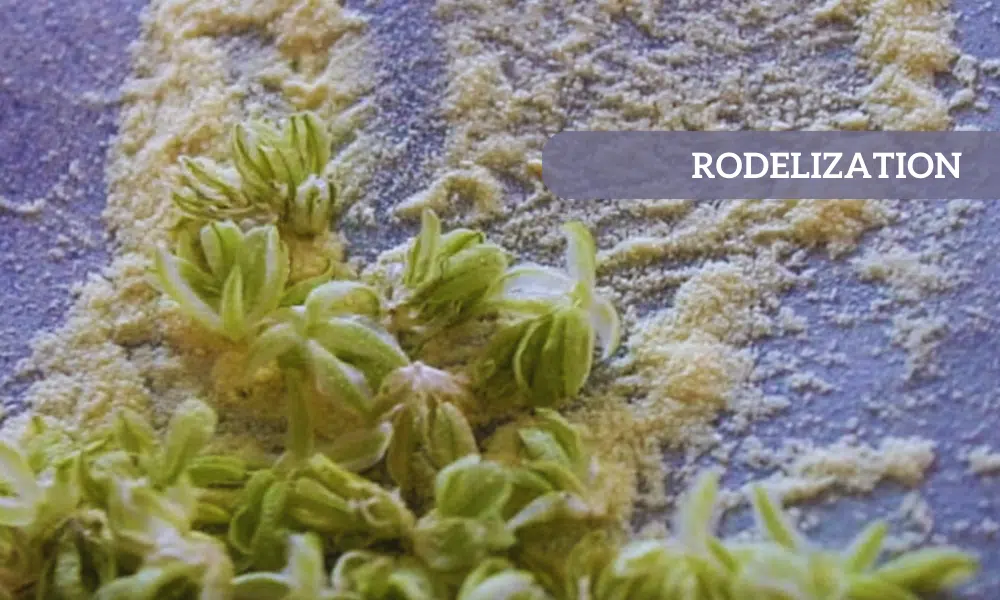
Being seedless (scientifically called Sinsemilla) is not the natural state of the cannabis plant – in nature, the plant breeds and creates flowers filled with seeds. The rodelization technique keeps a sinsemilla plant (a flowering, unpollinated cannabis plant) in its pot weeks past the date of harvest and allows a fascinating genetic modification to take over: the plant will develop pollen sacks in an attempt to self-pollinate.
You can collect this pollen and use it to pollinate other cannabis plants. Since the pollen is from a female plant, it should produce mostly female seeds.
Rodelization is a controversial feminization technique in the cannabis world because it’s less efficient and relies on the plant’s hermaphroditic ability. Some plants may not produce seeds as a last resort and simply end their life cycle. However, it also does not require the use of any chemicals, acids, or metals, making it perfectly safe. If you’re attempting seed feminization through rodelization, keep it separate and isolated from other plants so it doesn’t pollinate anything else.
Feminizing seeds with Gibberellic Acid
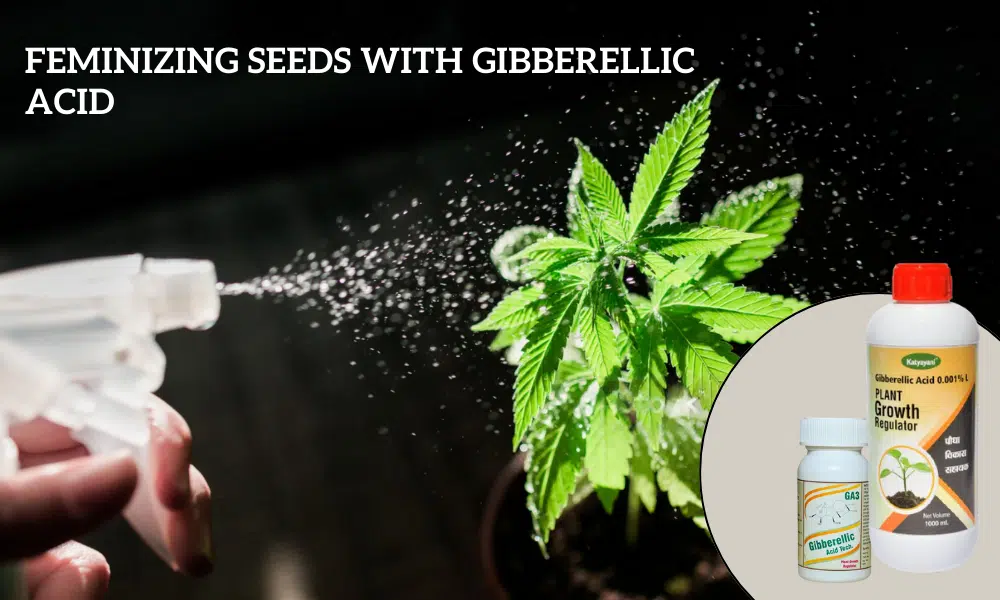
Gibberellic acids are a group of hormones responsible for plant growth and flowering. Just like ethylene is needed for female plants, gibberellins are needed for male plants. In addition to feminizing seeds, gibberellic acid will increase the growth of your cannabis plant.
You can make a gibberellic acid solution at home, but you have to purchase gibberellic acid to do so – you cannot DIY this plant hormone. There are several types of gibberellic acid you can buy, but GA3 is the most popular with growers.
To make a gibberellic acid solution at home, you’ll need:
- Gibberellic acid
- Distilled water
- A spray bottle
- PPM meter
Combine gibberellic acid with distilled water in the spray bottle until your solution reaches 100 ppm as measured by the PPM meter.
Spray your plant thoroughly once a day after it has begun flowering. Spray daily until pollen sacks begin to form and don’t be surprised if your plant gets taller and wider.
You’re mixing chemicals. While gibberellic acid is not dangerous for skin contact, use gloves, goggles, and other PPE to keep yourself safe. And just like with STS and colloidal silver, do not smoke any buds from the plant you’ve sprayed to feminize.
Feminizing seeds with aspirin
Feminizing with aspiring is perhaps the easiest method for a home grower to feminize seeds. It requires no electricity, no acids, or any other uncommon chemical substances. You don’t need a lot of aspirin either – 2 tablets is plenty.
This is a lesser-known feminization technique and while it works for experienced growers, new growers have reported hit-and-miss success. To feminize weed seeds with aspirin, you’ll need 1.5 tablets of aspirin, 2 gallons of water, and liquid dish soap. Get a step-by-step walkthrough on how to feminize seeds with aspirin with our guide.
Final Thoughts
If you want to make your own feminized cannabis seeds at home, you have options on how to do so. Determine your comfortability method using metal and electricity or going back to chemistry class to make your own solutions. You can always buy colloidal silver and silver thiosulfate online if you’re interested in using them but don’t feel comfortable making them.
FAQ section
Do female plants produce feminized seeds?
Female plants do not automatically produce feminized seeds. Female cannabis plants grow flowers and must be feminized through a process in order to produce seeds with female genetics.
Can a feminized seed turn male?
Feminizing seeds does not have a 100% success rate. The sex of a cannabis plant is determined when it’s a seed and while feminizing your seeds increases your chances of all female plants, there’s always a chance a male seed could get through. Additionally, feminizing seeds from a plant with poor genetics increases the chances of getting “hermies.”
How long does it take to feminize seeds?
Feminizing seeds can take a few weeks. The process starts when the cannabis plant begins to flower and can take 2 – 4 weeks to produce pollen sacks depending on what method of feminization you use.


